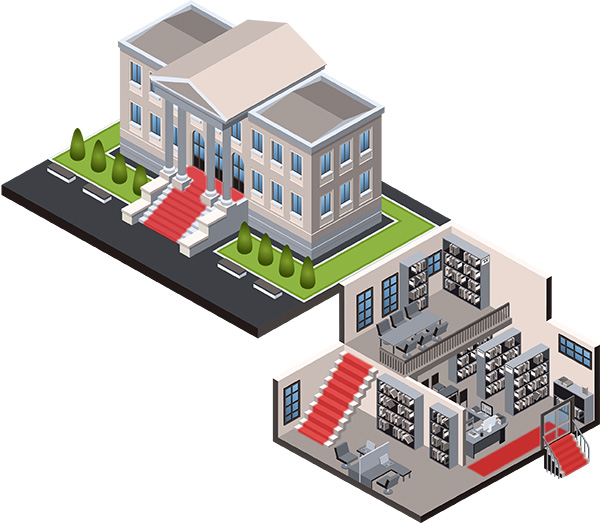SLIP & FALL PROBLEM AREAS AT WORK
Statistically speaking, for most workers there’s a significantly lower chance for a slip and fall accident at work than there is at home. The evidence suggests that employers take a more proactive, methodical approach to preventing slip, trip and fall accidents than the typical person does at home. There are a number of regulatory and statutory rules that mandate certain preventative measures at public and commercial spaces that contributes to a reduction in slip-and-fall accidents, but it’s just as clear that insurance companies and the potential for costly litigation provide incentives that do not necessarily exist in a residential environment. We tackle four work environments where a slip or fall could be very costly both personally and financially.
Commercial Locations
Whether a retail store, restaurant or office park, slip and fall accidents can occur both outside and inside a commercial property. Taking proactive steps to mitigate the potential for a slip or a fall is often the wisest investment that can be made both for employee and customer safety.
Property Management Locations
The day-to-day operations of rental properties, shopping malls, and condominium communities are often the responsibility of property management companies. Property managers are tasked with insuring that driveways, walkways, stairs and other shared spaces are structurally sound and safe for passage regardless of the environmental conditions. The high volume of pedestrian traffic makes both prevention and mitigation of slip-and-fall hazards top priorities for property managers and their companies.
Industrial Locations
Factory floors, production facilities, warehouses and other industrial locations often present significant risks for worker slips and falls. The physical activity inherent in such locations multiplies the opportunities for slips and falls to occur. The potential losses, measured both in personal and commercial terms, can be significant. Evaluating potential hazards and then mitigating those hazards with the appropriate Stop-the-Slip tools are an investment in both safety and the bottom line.
Government Locations
From post offices and libraries to public zoos and prairie paths, state, local and federal government facilities face varying and often unique slip-and-fall challenges. Like commercial businesses, government locations have to deal with weather-related conditions on sidewalks, parking lots, stairs and entryways. Unlike commercial locations, government properties can have uniquely hazardous situations such as those encountered in outdoor parks, zoos and wilderness trails. Handi-Treads have been successfully used to mitigate slip and fall dangers in dozens of government locations which you can read about here.
